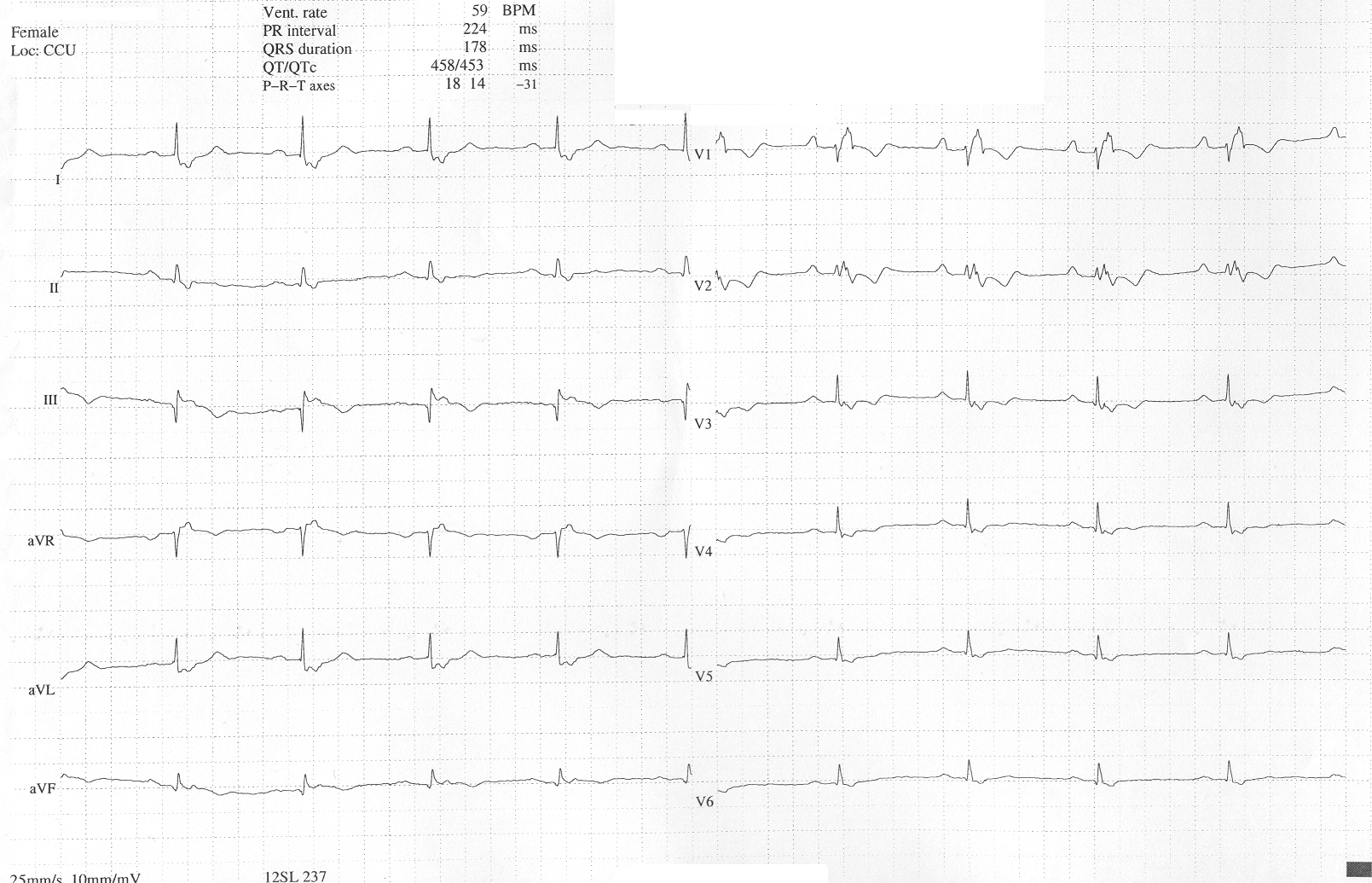Ebstein's anomaly of the tricuspid valve laboratory findings
Editor-In-Chief: C. Michael Gibson, M.S., M.D. [1] and Claudia P. Hochberg, M.D. [2]
Associate Editor-In-Chief: Cafer Zorkun, M.D., Ph.D. [3]
Laboratory Findings
Electrocardiogram
The EKG is abnormal in 50 to 67%.
About 50% of individuals with Ebstein's anomaly have evidence of Wolff-Parkinson-White Syndrome (syndrome of pre-excitation of the ventricles due to an accessory pathway known as the Bundle of Kent), secondary to the the apical displacement of the septal tricuspid valve leaflet resulting in discontinuity of the central fibrous body.

Other abnormalities that can be seen on the ECG include:[1]
(1) signs of right atrial enlargement or tall and broad 'Himalayan' P waves,
(2) first degree atrioventricular block manifesting as a prolonged PR-interval,
(3) low amplitude QRS complexes in the right precordial leads,
(4) atypical right bundle branch block,
(5) T wave inversion in V1-V4 and Q waves in V1-V4 and II, III and aVF.
(6) a short PR interval and a delta wave and low voltages.
Chest X Ray
The Chest X-ray shows a balloon shaped heart that looks a lot like a pericardial effusion. The RA is dilated. The heart looks globular.

Echocardiogram
See Echo in Ebstein's anomaly of the tricuspid valve for more info/images
a) Can be used to assess the severity of dilatation of the right atrium, and the functional status of the tricuspid valve as well as the right ventricle.
b) Normally the tricuspid valve closes within 30 msec of the mitral valve. In Ebstein's, the tricuspid valve closes 50 to 60 msec after the mitral valve.
c) The delayed tricuspid closure is not due to RBBB because it also occurs with preexcitation.
d) 2D ECHO allows you to assess whether the repair can be accomplished without a prosthetic valve, and detects whether an interatrial shunt is present.

Below is an apical 4-chamber transthoracic view, showing apically-displaced leaflets of the tricuspid valve. Note substantial tricuspid regurgitation, which originates close to the apex, where the abnormal leaflets actually coapt:
<Youtube v=KEko3kM26bY/>
CT and MRI
Inferior displacement of tricuspid valve leaflets with enlargement of the right atrium and enlargement and dysfunction of the right ventricle.
Cardiac catheterization and hemodynamics
a) RA pressure usually not increased due to the fact that the RA is enlarged and compliant.
b) Normal RV pressures unless significant TR is present.
c) PA pressures are normal or slightly decreased due to TR and a large right-to-left shunt.
d) An ASD may be present
References
- ↑ Khairy P, Marelli AJ (2007). "Clinical use of electrocardiography in adults with congenital heart disease". Circulation. 116 (23): 2734–46. doi:10.1161/CIRCULATIONAHA.107.691568. PMID 18056539. Unknown parameter
|month=ignored (help)